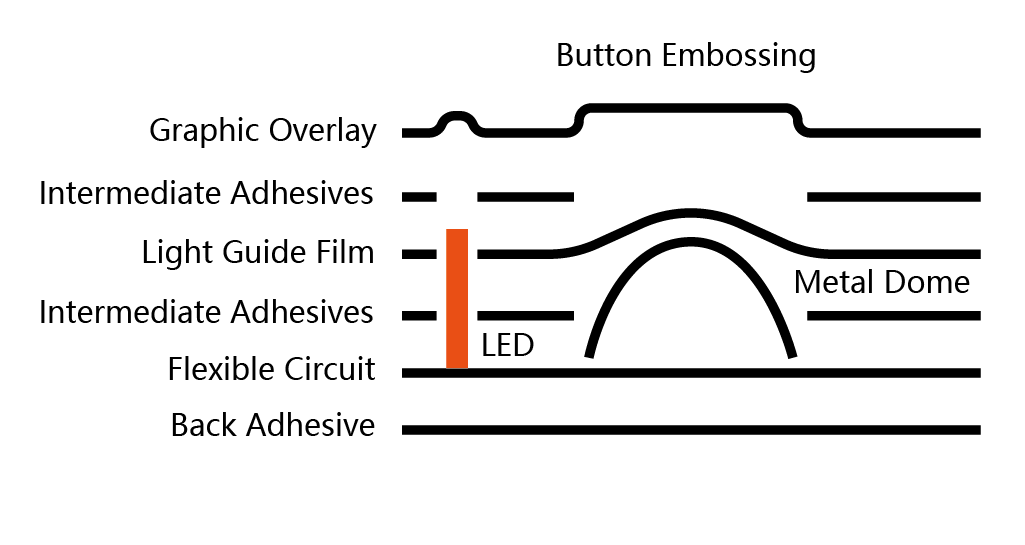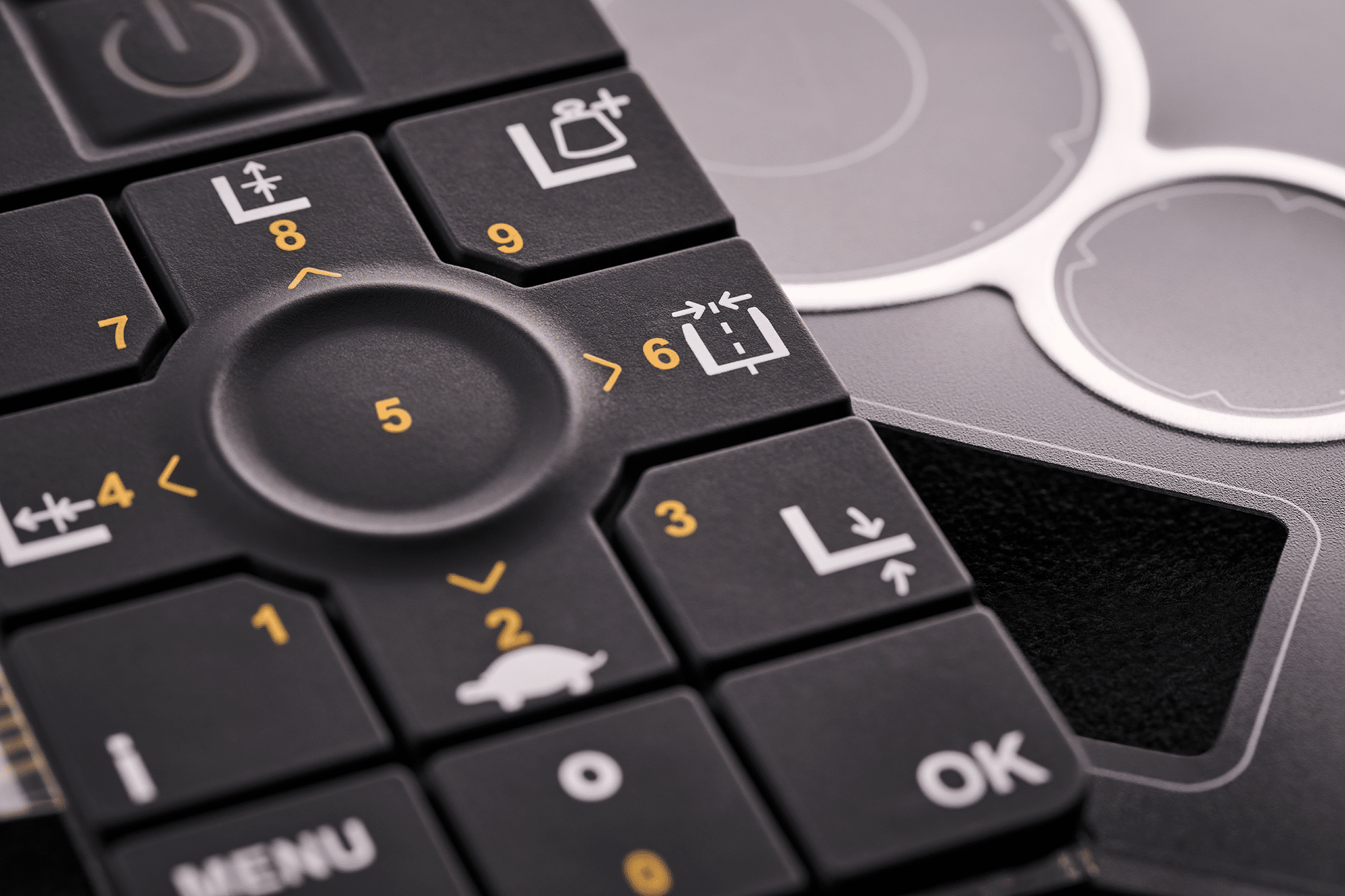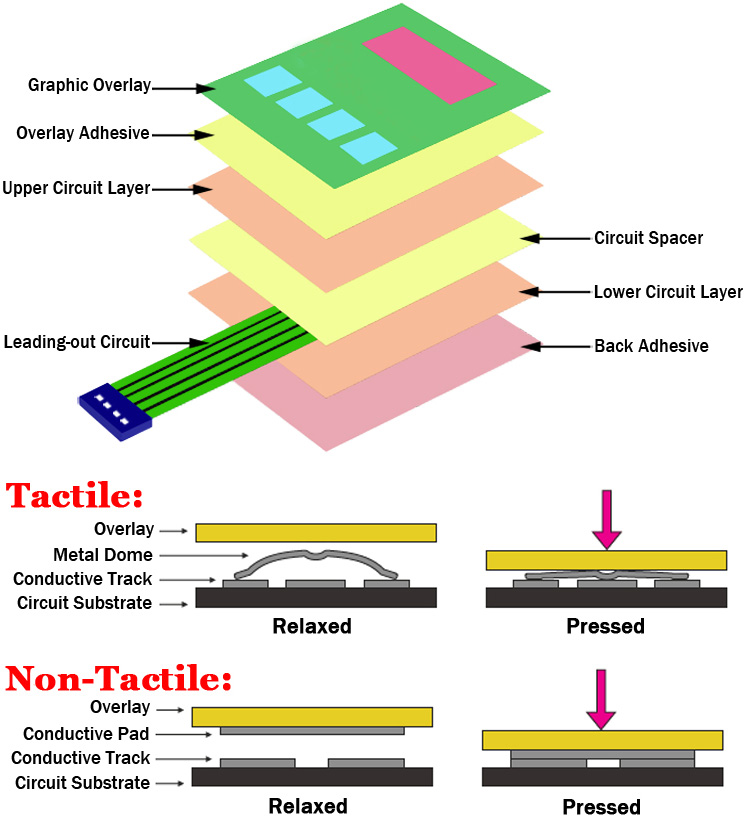The Manufacturing Refine Behind Membrane Layer Change: What You Need to Know
The production process behind membrane layer switches combines cautious design, material selection, and quality control. It starts with understanding the ins and outs of membrane button layout and advances with various phases, consisting of material options and printing strategies. Each phase plays a necessary role in making sure capability and sturdiness. The complexities of layer construction and the rigorous testing standards may reveal understandings that are not right away obvious. What exists beyond these foundational aspects?
Comprehending Membrane Layer Switch Over Style
Although membrane layer switches might show up easy in the beginning look, their layout involves detailed considerations that assure functionality and sturdiness. The style process starts with an extensive understanding of customer needs, consisting of the interface's intended application and environmental elements. Comfort designs is a crucial element, as the design needs to assist in ease of use while making sure that tactile feedback satisfies user expectations.Moreover, the layering of components, such as graphic overlays, sticky layers, and conductive traces, have to be specifically crafted. membrane switch. This split arrangement not only affects the button's responsiveness however likewise influences its durability. Interest is provided to the securing methods utilized to safeguard against moisture and dust, which could compromise efficiency. Furthermore, layout factors to consider extend to appearances, where color plans and visual quality boost customer experience. Eventually, the layout of membrane switches balances performance, customer experience, and toughness, ensuring that they meet the needs of different applications efficiently
Materials Utilized in Membrane Layer Switch Manufacturing
When selecting products for membrane layer button manufacturing, it is vital to consider both efficiency and toughness. The key products consist of polyester and polycarbonate movies, which offer adaptability and toughness. These movies are usually coated with sticky to assure proper bonding to substratums. Conductive inks, normally made up of silver or carbon, are crucial for creating electric links within the switch, enabling for trustworthy operation.Additionally, a protective layer, such as a difficult coat, is regularly related to enhance scrape resistance and long life. The choice of backing product, such as acrylic or foam, can considerably affect the switch's tactile feel and total user experience. Various environmental elements, including temperature level and humidity, ought to assist product choice to assure peak efficiency in details applications. Ultimately, the best mix of products adds to the membrane layer button's performance and life expectancy, making educated choices important for producers.
The Printing Process: Creating Graphics and Text
The printing process in membrane layer button manufacturing plays a significant function in creating premium graphics and text. Various graphic layout strategies are used to ensure visual appeal and functionality, while mindful ink option approaches are essential for durability and efficiency. Recognizing these aspects is fundamental for achieving ideal outcomes in membrane layer switch design.
Graphic Design Techniques
Graphic style methods play a vital duty in the printing process of membrane buttons, as they specify how graphics and message will ultimately show up on the last product. Efficient visuals layout involves the calculated usage of colors, typefaces, and formats to boost readability and visual appeal. Designers commonly make use of vector graphics for scalability, ensuring that images remain sharp at different dimensions. In addition, attention to contrast and alignment is vital, as it influences user interaction and visual high quality. The unification of branding components, such as logo designs, have to be taken care of with treatment to keep brand name honesty. On the whole, thoughtful visuals layout strategies add significantly to the capability and good looks of membrane switches, impacting user experience and item efficiency.
Ink Choice Techniques
Choosing the suitable ink is vital for achieving the desired aesthetic top quality and toughness in membrane button production. Various ink kinds are made use of, consisting of solvent-based, water-based, and UV-curable inks. Each type offers distinctive features, such as attachment, versatility, and resistance to environmental variables. Solvent-based inks are commonly favored for their resilience and vibrant shades, while water-based inks are much more eco friendly yet may have constraints in bond. UV-curable inks offer quick treating and durable performance. In addition, color matching methods guarantee that the selected inks line up with layout specs. Inevitably, the choice of ink need to consider aspects such as application technique, substratum compatibility, and end-use demands to attain exceptional results in membrane button graphics and text.
Layer Building and Setting Up

Product Option Process
A cautious option of products is important in the production procedure of membrane layer buttons, as it straight influences performance and durability. The primary materials utilized include polyester, polycarbonate, and different conductive inks. Polyester is usually favored for its excellent resistance to chemicals and abrasion, making it appropriate for rough settings. Polycarbonate, on the various other hand, provides superior clarity and impact resistance, original site which is useful for applications needing visibility and effectiveness. Conductive inks, typically made up of silver or carbon, are vital for developing reliable electric paths. In addition, the selection of glue products influences the general stability of the switch - membrane switch. Evaluating factors such as ecological direct exposure, responsive responses, and visual requirements guides manufacturers in picking the ideal materials for their particular applications
Layer Adhesion Techniques
Adhering layers in membrane layer switch construction is an essential procedure that guarantees functionality and long life. Different bond techniques are used to protect perfect bonding in between layers, which normally include making use of adhesives, warm, and pressure. Pressure-sensitive adhesives (PSAs) are typically made use of for their simplicity of application and immediate bonding abilities. Additionally, thermal bonding strategies can be applied, where warmth is utilized to activate glue homes, securing a solid bond. The choice of bond approach mostly relies on the materials included and the certain application requirements of the membrane layer button. Proper placement and uniform application of adhesives are vital to prevent flaws, securing the switch runs effectively throughout its designated life expectancy.
Quality Assurance Steps
Assuring quality control throughout the layer building and construction and assembly of membrane buttons is crucial for maintaining performance and dependability. This procedure usually includes numerous critical steps, consisting of detailed inspections at each stage of production. Makers make use of advanced testing methods, such as peel tests and adhesion assessments, to verify the integrity of layer bonds. Additionally, visual assessments are conducted to determine reference any type of issues in printing or product variances. Environmental conditions, such as temperature level and humidity, are very carefully kept an eye on to assure optimal healing and adhesion. Additionally, normal calibration of tools helps preserve specific production requirements. By implementing these quality control actions, suppliers can substantially lower the danger of product failing, ensuring that the final membrane layer changes meet the needed specifications and consumer assumptions.
Evaluating and Quality Assurance Actions

Advancements in Membrane Layer Switch Over Innovation
As innovations in modern technology continue to evolve, membrane switches are gaining from innovative developments that enhance their performance and user experience. One notable advancement is the combination of capacitive touch modern technology, which enables for even more user-friendly and receptive user interfaces. This shift not only improves looks yet also reduces mechanical wear and tear, extending the life-span of the switches.Additionally, innovations in visuals overlay materials have led to boosted longevity and resistance to ecological aspects such as wetness and UV light. These materials currently provide enhanced quality and illumination, further elevating the visual appeal.Furthermore, the incorporation of clever innovation is transforming membrane layer changes right into interactive control board, enabling connection with IoT devices. This connection cultivates a smooth user experience, leading the way for applications in numerous markets, from healthcare to customer electronics. Jointly, these innovations position membrane layer switches as essential elements in modern-day gadget layout.
Frequently Asked Inquiries
How Lengthy Does the Membrane Switch Over Manufacturing Refine Take?
The duration of the membrane button manufacturing process can differ considerably. Aspects such as complexity, materials used, and manufacturing quantity influence timelines, find more with normal manufacturing ranging from a few days to a number of weeks for conclusion.
What Are the Common Applications for Membrane Buttons?
Membrane layer switches are typically made use of in numerous industries, including auto controls, household home appliances, clinical tools, and consumer electronics (membrane switch). Their adaptability and durability make them optimal for applications needing user-friendly interfaces and trustworthy efficiency in varied environments
Can Membrane Layer Switches Be Customized for Particular Requirements?

What Is the Life-span of a Regular Membrane Layer Switch Over?
The life-span of a typical membrane layer button varies, yet usually, it varies from 1 to 5 million cycles. Aspects such as usage, atmosphere, and material quality considerably influence sturdiness and general efficiency gradually.

Are Membrane Layer Changes Eco-friendly?
The ecological friendliness of membrane layer changes varies. Some products used might not be recyclable, while others can be environmentally friendly. The overall influence depends on making methods and materials, requiring careful factor to consider during choice and disposal. The production process behind membrane layer switches combines mindful design, product selection, and top quality control. It begins with comprehending the intricacies of membrane layer button style and advances through numerous stages, including product choices and printing methods. When picking materials for membrane button manufacturing, it is necessary to contemplate both efficiency and sturdiness. A mindful selection of materials is crucial in the manufacturing process of membrane layer buttons, as it straight influences performance and longevity. The choice of attachment method mainly depends on the products entailed and the specific application demands of the membrane button.